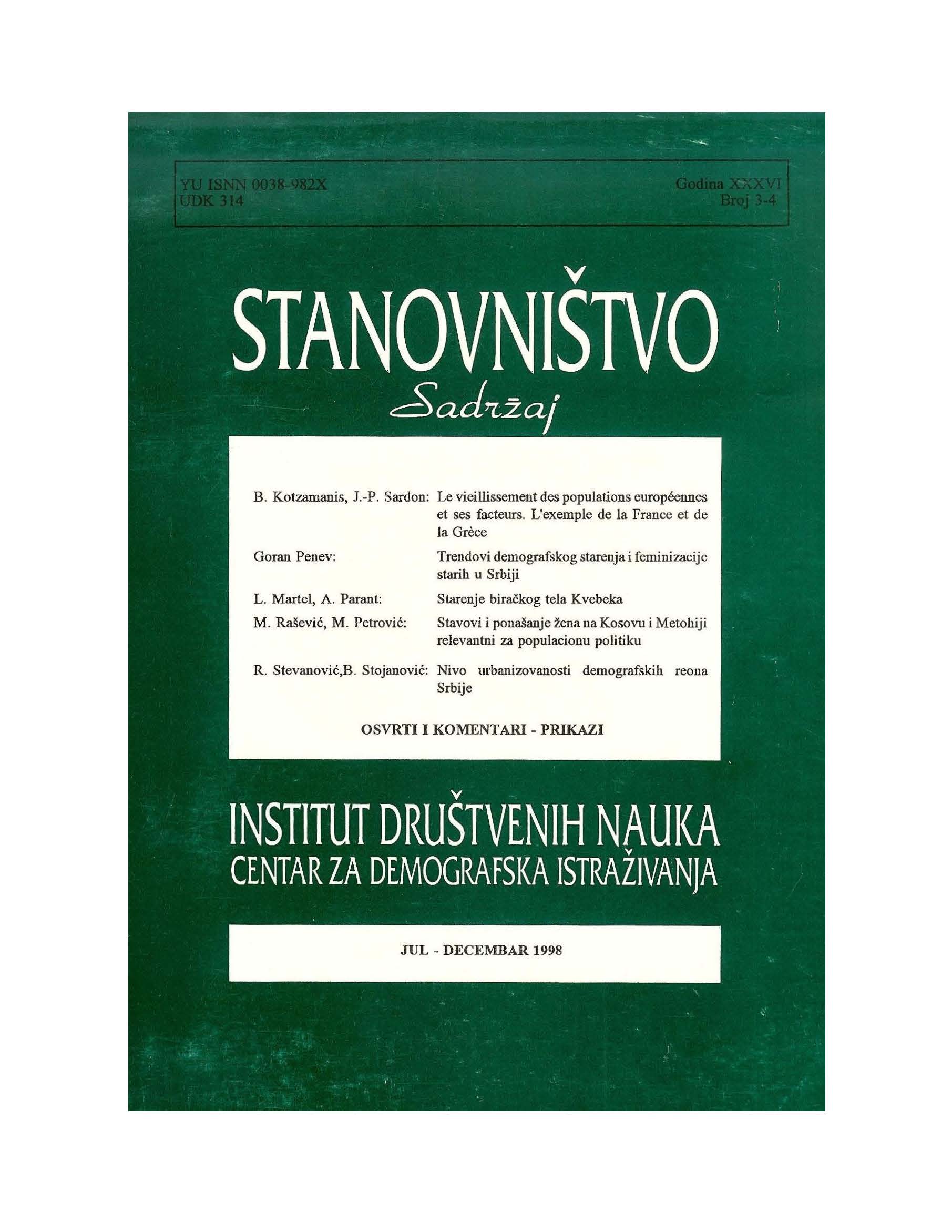Level of Urban Development of Demographic Areas in Serbia
Main Article Content
Abstract
The main aim of this analysis was to determine the demographic effects of the process of urbanization (as measured by the level of population concentration in, formally speaking, urban settlements) on the regional division of Serbia (made more than three decades ago) into standard zones for demographic research. Likewise, the aim of the investigation was to determine (as accurately as possible) the extent to which this scheme of regional division could be used as a basis for demographic regionalization of the territory of the Republic. This two-tier scheme divides the area of Serbia into thirty I-tier (I) zones (regions) and seven II-tier zones (regions) by combining some, usually modified, geographic criteria and (fully applying) the carefully selected strictly demographic criteria, but not applying those of the spatial-demographic character (like densities, migratory features, urbanization). Demographic effects of the process of urbanization (as a strictly demographic parameter) on this regional division were investigated only in terms of the I-tier zones and not at lower (subregional) spatial units - municipalities. The changes were analysed for the period from 1971 to 1991 only, which was estimated as representative enough for this process. Based on the investigation results, the following was concluded:
- despite strong demographic effects of the process of urbanization, most standard zones for demographic research have managed to keep the relatively high degree of homogeneity, which makes the current regional division of Serbia quite acceptable with some slight modifications;
- modifications of this scheme, as determined by the demographic effects of the process of urbanization, would mostly go into the direction of intra-regional changes in regions to which the major urban agglomerations of Serbia belong because, as large concentrations of population, they form a new spatial demographic structure of these zones (regions);
- the modified scheme (adjusted to the actual demographic state and the structure of the zones) would represent a proper base for demographic regionalization of the Republic of Serbia.
Downloads
Article Details

This work is licensed under a Creative Commons Attribution-NonCommercial 4.0 International License.
Published by the Institute of Social Sciences - Center for Demographic Research





